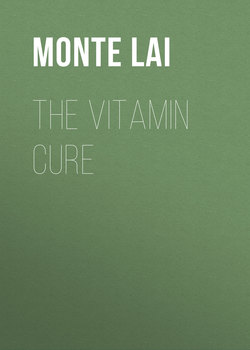Читать книгу The Vitamin Cure - Monte Lai - Страница 37
На сайте Литреса книга снята с продажи.
Оглавление16
SODIUM
Sodium is an essential element. The human body contains about 200 g of sodium—about 0.4% of the body’s weight. Sodium exists in an ionic form that is distributed widely in the extracellular fluids of all organs and tissues, such as in the blood and lymphatic fluid. Sodium concentration in the human body is equivalent to that in seawater. The main dietary sources of sodium ion are seasonings used in cooking and table salt.
What Are the Major Functions of Sodium Ion?
• Membrane potential. Sodium ions and potassium ions help maintain the proper membrane potential in every cell in the body. The membrane potential of the cellular membrane controls the traffic of substances into or out of a cell as well as the transmission of nerve messages from the brain to various parts of the body, such as the heart and muscles.
• Blood pressure. Sodium ions participate in regulating blood volume and blood pressure. A high blood sodium concentration triggers the outflow of intracellular water into the bloodstream and dilutes the blood sodium concentration. On the other hand, the outflow of intracellular water into the bloodstream results in a shortage of water intracellularly and the feeling of thirst. That is why consumption of salty foods will make you feel thirsty. In addition, the outflow of intracellular water into the bloodstream due to a high blood sodium concentration increases the volume of the bloodstream, which exerts extra pressure against the arterial wall and hastens hypertension. Habitual consumption of salty foods can therefore elevate the risk of hypertension.
What Are the Symptoms of Sodium Deficiency?
• The major symptoms of sodium deficiency include headache, nausea, vomiting, and dizziness, as well as, in severe cases, brain swelling, seizures, unconsciousness, and brain damage.
What Are the Risk Factors for Sodium Deficiency?
• Diuretics. Sodium deficiency is frequently caused by long-term use of medications such as diuretics, which can diminish the blood sodium concentration, rather than insufficient dietary intake.
• Athletics. Heavy perspiration can precipitate the loss of electrolytes such as sodium ions from the bloodstream. For example, triathlon and marathon runners who lose a lot of sodium ions during vigorous competition and drink large amounts of low-sodium water to quench the thirst are vulnerable to severe sodium deficiency, which can, in severe cases, lead to brain swelling, unconsciousness, and even death.
Which Food Items Are Sodium Rich?
Food items that contain high sodium content include table salt, soy sauce, preserved meats, bacon, fast foods, and canned foods.
This list of sodium-rich food items is adapted from information provided by the USDA.
| FOOD | PORTION | SODIUM CONTENT, MG | % DAILY REFERENCE VALUE |
|---|---|---|---|
| Chicken noodle soup (canned) | 1 cup | 1,400 | 58 |
| Spaghetti (with cheese) | 1 cup | 1,300 | 54 |
| French fries (with salt) | 8 ounces | 1,200 | 50 |
| Pretzels | 2 ounces | 1,000 | 42 |
| Ham | 3 ounces | 1,000 | 42 |
| Fish sandwich (with sauce) | 1 | 940 | 39 |
| Tomato juice (canned) | 8 ounces | 650 | 27 |
| Hot dogs | 1 | 510 | 21 |
| Bread | 2 slices | 340 | 14 |
| Whole wheat bread | 2 slices | 264 | 11 |
Daily reference value of sodium is 2,400 mg according to the 2013 FDA food-labeling guidelines.
What Are the Recommended Dietary Allowances for Sodium?
| 1–3 years | 1.0 g |
| 4–8 years | 1.2 g |
| 9–13 years | 1.5 g |
| 14–18 years | 1.5 g |
| 19 years and older | 1.5 g |
The upper daily intake limit of sodium is 2.3 g.
Safety Issues
• Side effects. Too much sodium in salty foods burdens the body. The body needs an extra amount of water to dilute the high blood sodium concentration. To do that, the kidneys inhibit the excretion of water in the urine and reabsorb excreted water back into the bloodstream, causing expansion of the blood volume, which exerts extra pressure against the arterial wall, particularly in the heart and brain, leading to the risk of hypertension, heart disease, and stroke.
• Stomach cancer. High consumption of salty foods can induce chronic inflammation in the stomach, increasing the risk of infection by Helicobacter pylori bacteria and stomach cancer.
• Kidney stones. High dietary intake of sodium can raise the calcium ion concentration in the kidneys and urinary tract and elevate the risk of kidney stone formation.
What Types of Drugs May Interact with Sodium?
• Medications like diuretics, morphine, and antidepressant drugs can cause sodium deficiency.
